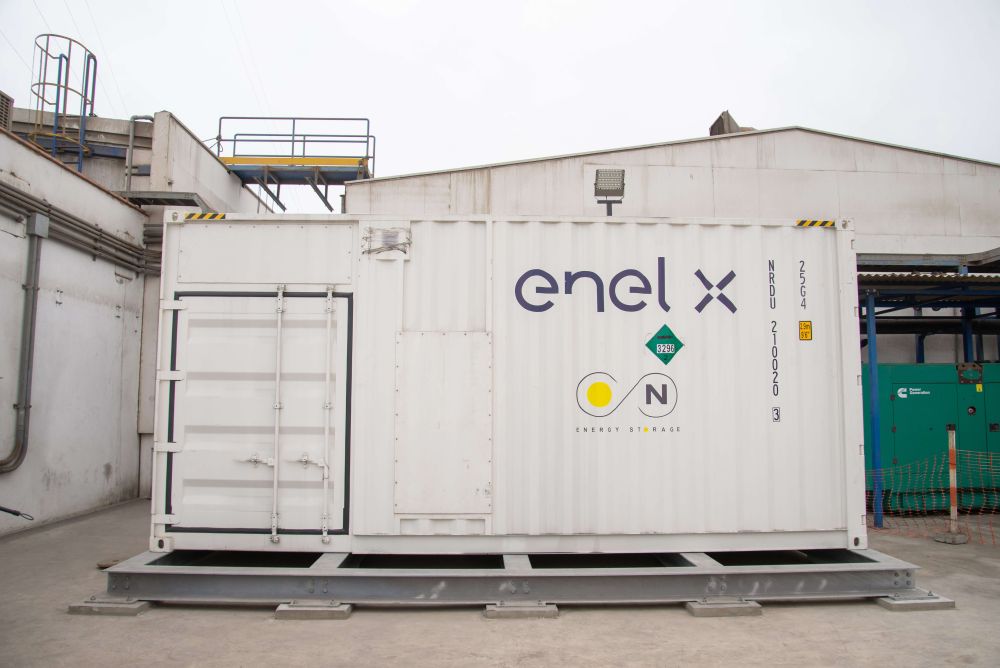| Duration: | 01/2022 - 12/2027 |
| Contracting Authority/ Sponsors: | Innovation Fund, European Union |
| Project Partners: | Aeroporti di Roma (Project Coordinator), Enel X, Fraunhofer ISE |
| Project Focus: |
PIONEER – Airport Sustainability Second Life Battery Storage
The PIONEER project aims to support the »Leonardo da Vinci« international Airport in Rome Fiumicino on its way toward net zero emission airport. A 30 MWp photovoltaic system is planned for this purpose, which will be supplemented by a 2nd Life energy storage system consisting of used vehicle batteries with a total output of 5 MW and a capacity of 10 MWh. This battery system will store excess PV energy produced during the day and make it available again to meet evening peak demand, as well as providing additional grid services. The main objectives of the project include the development and construction of a mobile test bench for the characterization and qualification of battery systems, and the integration of 2nd life batteries from several car manufacturers with inhomogeneous key characteristics into a safe and reliable power system.
It is estimated that 29 GWh of used electric vehicle batteries will be available by 2025 with a residual capacity of about 70-80%. Giving these batteries a second life by combining them with renewable energy sources contributes to further grid integration of fluctuating power generation from PV and wind, while improving their carbon footprint through an extended use phase. As part of the PIONEER project, a commercial use case for 2nd-life batteries in combination with a 30 MWp PV system to power the »Leonardo da Vinci« international airport in Rome Fiumicino will be demonstrated. The energy storage system with a rated output of 5 MW and a capacity of 10 MWh will be designed, built, put into operation and operated out of used vehicle batteries from different vehicle manufacturers. This has the advantage of reducing procurement risk while increasing the modularity of the system.
The integration of 2nd life batteries from different OEMs into a common power supply and their effective application for intermediate storage of PV electricity as well as for the provision of grid services requires the most precise information possible about the condition and expected lifetime of the batteries as well as efficient technical control of storage units with different characteristics, such as voltage, capacity, performance, cell chemistry used and, above all, degree of aging. Therefore, to characterize and qualify the different used vehicle batteries, a mobile test bench with efficient testing algorithms will be developed and set up to evaluate directly on site the suitability of the batteries for 2nd life use before they are integrated into the storage system. Intelligent operation management strategies then maximize the performance and yield of the batteries. Advanced machine learning techniques are used to determine the airport's energy needs and automatically charge and discharge the storage system at optimal times to achieve the highest possible financial return while accounting for battery aging. The knowledge gained through the project supports the establishment of meaningful business and operator models for brought vehicle batteries in 2nd life applications. On the technical side, this includes the description of the technical equipment as well as the characterization and qualification procedures that efficiently determine the current state of the batteries as well as allow an estimation of their still available lifetime before they are integrated into storage systems.
The successful implementation of stationary battery storage systems in combination with energy management systems is key for very high shares of fluctuating renewable energies in the future power supply. Using Rome Airport as an example, the planned 2nd-life battery storage in combination with a PV system shows the way towards the goal of net-zero emissions in the local power supply. In addition, this energy storage will also be used for grid services. The switch to solar energy will replace electricity currently generated by a natural gas-fired CHP plant. Thus, more than 16,000 tons of CO2 absolute net THT emission will be avoided in the first ten years of operation.


